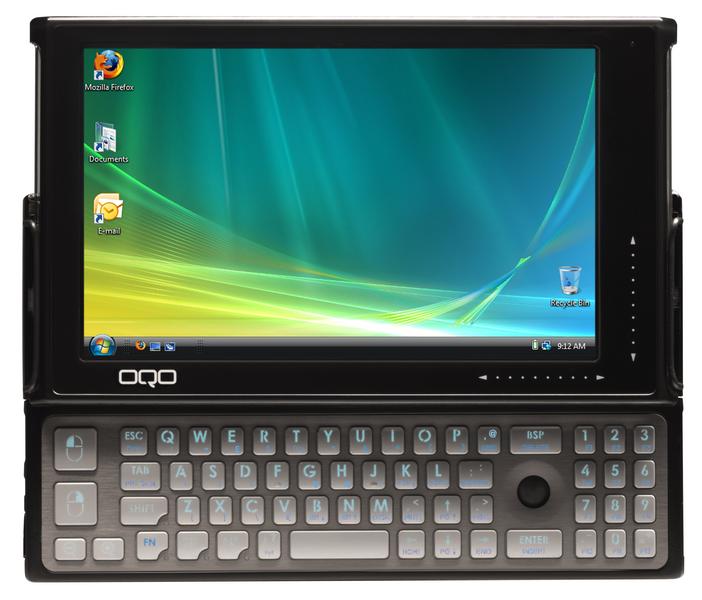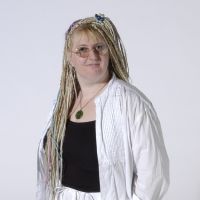OQO launches HSDPA-enabled ultra-mobile PC
But 3G, wi-fi and Bluetooth in a 5" PC with sliding keyboard is only for Europe and Asia.


OQO has announced a quadband HSDPA-enabled version of its ultra-mobile PC, which also has Bluetooth and wi-fi (a, b and g) connectivity.
The OQO model e2 is available with Windows XP, Windows XP Tablet Edition and Vista Ultimate. All models have an active digitizer, as well as TouchScroller strips beside the screen and a trackpoint controller and left and right mouse buttons on the slide-out keyboard, but only the Tablet model comes with an active pen.
Although OQO doesn't sell a version with Linux installed, director of international channels Martin Day said the e2 has been tested with Ubuntu and Red Hat.
Buyers have the choice of a 1.5GHz or 1/6GHz VIA C7-M CPU, 1GB of RAM, 60GB, 80GB or 120GB hard drive or a 32GB SSD, plus TPM 1.2 embedded security and a 5"WVGA screen.
The model e2 has only one USB port plus an HDMI connector (supporting 1080p), but it comes with an adapter that converts this to VGA and Ethernet.
It weights just 454g with the standard 3 hour battery; OQO claims 2.5 hours battery life using HSDAP or wi-fi, with double that from the optional extended battery. The optional docking station adds three USB ports, Ethernet and VGA (1920 x 1200) as well as a dual-layer DVD+/-RW drive and a DVI adapter.
The model e2 is available from distributors Expansys and Dynamism immediately, with prices from 1015 depending on the configuration.
Sign up today and you will receive a free copy of our Future Focus 2025 report - the leading guidance on AI, cybersecurity and other IT challenges as per 700+ senior executives
The company is in discussions with UK operators but initial models are unlocked and will work on any data tariff, including T-Mobile's new 50p-a-day PAYG data plan.
The e2 won't be available in the US, said CEO Dennis Moore, because devices have to be pre-approved by mobile operators.
Initially there is a single model for Europe and Asia with pound, euro and yen symbols on the keyboard, but other European key layouts may follow and a model with GPS is planned for next year. The company is also looking at adding array microphones for speech recognition in future models.
Mary is a freelance business technology journalist who has written for the likes of ITPro, CIO, ZDNet, TechRepublic, The New Stack, The Register, and many other online titles, as well as national publications like the Guardian and Financial Times. She has also held editor positions at AOL’s online technology channel, PC Plus, IT Expert, and Program Now. In her career spanning more than three decades, the Oxford University-educated journalist has seen and covered the development of the technology industry through many of its most significant stages.
Mary has experience in almost all areas of technology but specialises in all things Microsoft and has written two books on Windows 8. She also has extensive expertise in consumer hardware and cloud services - mobile phones to mainframes. Aside from reporting on the latest technology news and trends, and developing whitepapers for a range of industry clients, Mary also writes short technology mysteries and publishes them through Amazon.
-
 Trump's AI executive order could leave US in a 'regulatory vacuum'
Trump's AI executive order could leave US in a 'regulatory vacuum'News Citing a "patchwork of 50 different regulatory regimes" and "ideological bias", President Trump wants rules to be set at a federal level
-
 TPUs: Google's home advantage
TPUs: Google's home advantageITPro Podcast How does TPU v7 stack up against Nvidia's latest chips – and can Google scale AI using only its own supply?
